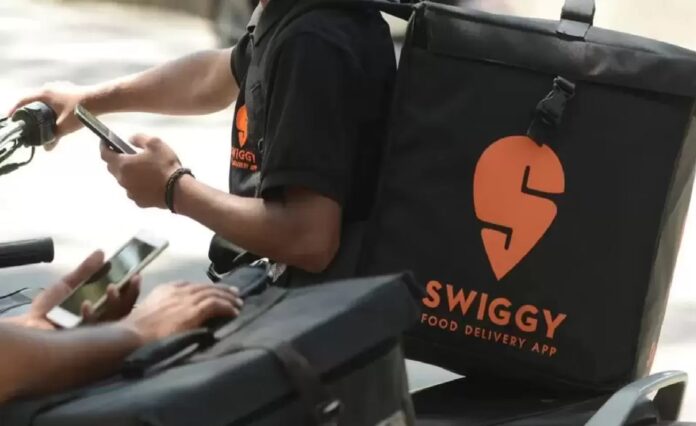Swiggy Follows Zomato in Hiking Platform Fees Amid Festival Season and IPO Preparations
Swiggy has recently announced an increase in its platform fee from ₹6 to ₹10 per order, following a similar move by its competitor Zomato. This hike comes at a time when both companies are preparing for the busy festival season and facing increased operational demands. The decision to raise platform fees reflects the ongoing competition and the need to sustain service levels during peak periods, as both Swiggy and Zomato adapt to changing market conditions.
The increase in platform fees, which users will notice on their orders starting from Wednesday, October 23, 2024, has been framed as a necessary measure to cover rising operational costs. As the festival season brings a surge in food delivery orders, both Swiggy and Zomato are under pressure to maintain seamless services. In their notification to customers, Zomato explained that the fee hike was essential to ensure the company could “keep running” during this period of increased demand, while Swiggy’s decision mirrors this approach.
The platform fee is a relatively small but important revenue stream for food delivery companies, especially as they face growing costs associated with logistics, delivery personnel, and infrastructure during busy times. While the increase may seem minor—just ₹4 per order—the cumulative impact across millions of orders can help these platforms offset a variety of expenses. It’s also an indication that food delivery companies are seeking ways to navigate the delicate balance of offering affordable services while managing operational challenges in a highly competitive market.
Both Swiggy and Zomato are leaders in India’s booming food delivery market, where competition is fierce, and margins are tight. In recent years, both companies have made significant investments in expanding their delivery networks, enhancing technology, and improving customer service to maintain their competitive edge. These investments have contributed to higher operating costs, especially during high-demand periods such as the festival season. The decision to increase platform fees can be seen as a strategic move to ensure the sustainability of their services while maintaining profitability.
The platform fee increase also aligns with Swiggy’s broader financial strategy, particularly in light of its upcoming Initial Public Offering (IPO). According to reports, Swiggy is looking to raise over ₹10,400 crore through the IPO, with ₹3,750 crore coming from fresh issuance and the remainder through an offer for sale. On October 4, 2024, Swiggy’s shareholders approved a proposal to increase the fresh issue component of the IPO to ₹5,000 crore, up from the previous ₹3,750 crore. This move is likely part of Swiggy’s efforts to strengthen its financial position ahead of the IPO and meet investor expectations.
Swiggy’s IPO plans have been in the spotlight for some time, as the company prepares to go public and tap into new sources of capital. The increased platform fees could be a way for Swiggy to boost its revenue ahead of the IPO, as it seeks to present a strong financial outlook to potential investors. The food delivery industry, while growing rapidly, is also highly capital-intensive, requiring constant investments in technology, logistics, and marketing to stay ahead of competitors. By raising its platform fees, Swiggy may be trying to balance the need for continued growth with the demand for improved profitability.
This platform fee hike also highlights the broader trends in India’s food delivery market, where companies are increasingly exploring new revenue streams and cost-saving measures to remain competitive. As customer acquisition costs rise and operational expenses mount, both Swiggy and Zomato have been experimenting with various strategies to improve their bottom line. These include introducing new subscription models, enhancing premium offerings, and expanding into adjacent sectors such as grocery delivery and cloud kitchens. The increase in platform fees is just one of the many ways these companies are seeking to optimize their revenue streams while ensuring that they can continue to meet the growing demand for food delivery services.
For consumers, the increased fees may be seen as a minor inconvenience, especially as food delivery becomes an integral part of their daily lives, particularly during festive occasions. However, with both Swiggy and Zomato increasing their platform fees simultaneously, it’s unlikely that customers will shift to alternative services, as these two companies dominate the Indian food delivery market. The relatively small fee increase is unlikely to deter most customers from using these platforms, especially during the convenience-driven festival season when demand for quick and reliable food delivery services is at its peak.
In conclusion, Swiggy’s decision to hike its platform fees to ₹10 per order, following Zomato’s similar move, underscores the competitive nature of India’s food delivery market. The increase is a strategic response to the rising operational costs associated with the festive season and is aimed at sustaining service levels while maintaining profitability. Additionally, Swiggy’s IPO plans add another layer of significance to this decision, as the company seeks to strengthen its financial position ahead of going public. As the food delivery market continues to evolve, companies like Swiggy and Zomato will likely continue exploring new ways to optimize their revenue while meeting the growing demands of their customer base.

